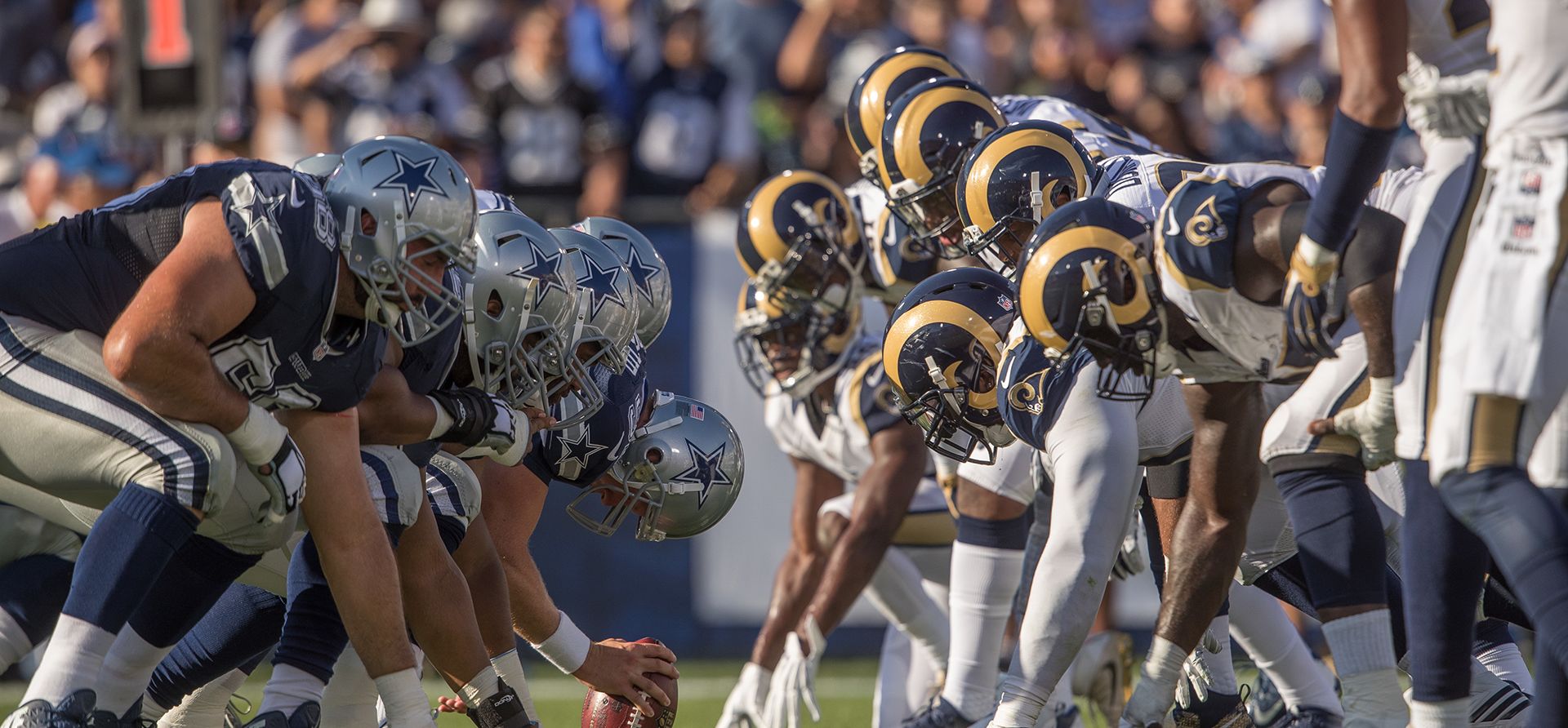The Los Angeles Rams are back. After two decades of residing in the Midwest, the St. Louis Rams embarked upon a West Coast transition to Southern California. What does this return mean for L.A. National Football League fans? As this first season comes to a close, you could call it a bit of a mixed bag; the Los Angeles Rams ended their homecoming season with a 4-12 record—including seven losses in a row. Rams’ management recently fired head coach Jeff Fisher, and the team is in the midst of restructuring.
They may have had a rough start, but the Rams deserve some slack. “When you move a whole organization and uproot players from the Midwest to the West, it takes a toll and it takes time,” says Palos Verdes Estates resident Antonio Pierce, former player, ESPN commentator and current head coach for powerhouse Long Beach Polytechnic High School.
It’s too early to simply write off the Rams just yet, and Antonio, a retired NFL linebacker who played for both the Washington Redskins and the New York Giants, notes that what’s truly important is that Los Angeles finally has a team once again. He points out that for the first time in their lives, many of his high school students at Polytechnic actually have an NFL hometown team to support.
“The Rams are the only [local football] team these kids can look up to other than USC and UCLA,” he says. The Los Angeles Rams are good, he notes, for this city, and in particular they’re also beneficial for the South Bay, especially since the team will be playing in a $2.66 billion stadium in nearby Inglewood, which is scheduled to open in 2019.
“It’s important to note that instead of picking Downtown or the Valley, they’re going to be here [in the South Bay]. It’s going to be great for the economy, the growth we’ll see will be incredible,” Antonio says. The Rams will hopefully, he believes, inspire an entire generation of South Bay football fans to achieve their athletic goals. And most importantly, it’s good to have an NFL team in Los Angeles that actually has a bit of history with the city.
The Journey Home
The Rams are, interestingly, one of the oldest franchises in the history of the NFL. The team got its start in 1937 in Cleveland, Ohio. The Rams’ first few seasons were relatively uneventful, and in 1943 the team actually disbanded due to manpower shortages related to World War II. Businessman Dan Reeves purchased the team in 1941 and moved the Rams to Los Angeles in 1946.
The Rams made a bit of history when the team’s administration signed two African-American players, Kenny Washington and Woody Strode. This was the first time African-American athletes had been signed to an NFL team in 13 years, following an unofficial ban on black players participating in the league.
The Rams went on to win four NFL Western division championships and eventually claimed the NFL title against the Cleveland Browns in 1951. They achieved championship contention once again in 1967 and a string of successes—namely five NFC Western division championships—during the ‘70s. In 1979 the team nabbed the NFC championship but then subsequently lost to Pittsburgh in Super Bowl XIV.
During the ‘80s and ‘90s the team went through an administrative transition, and in 1995 the Rams relocated to St. Louis. The team won Super Bowl XXXIV against the Tennessee Titans. In 2011 the team hired Jeff Fisher as the head coach, and beginning last year, the Rams made the transition back to Los Angeles. Until the new stadium is built, the Rams will continue to play at the L.A. Memorial Coliseum, which is where the team first played when they arrived here back in the ‘40s.
L.A. Perspective
Robert “Bob” Klein is a bit of a Rams fan. The team drafted him in 1969, and he played as a tight end. Although he’s since stepped away from football—he’s currently the president and CEO of Saint John’s Health Center Foundation—Robert is an avid supporter of the team. He attended the Rams’ preseason game against the Dallas Cowboys last August, and although the Coliseum featured the largest crowd ever to watch a preseason football game (nearly 90,000 strong), he remembers the fan base being decidedly mixed.
“I think there were more Dallas fans,” he says with a laugh. He points out the Rams have a historical tie to Los Angeles, but their departure from the city created a generational fan-base gap. There are established fans, like Robert, who were present when the team was still Los Angeles based, but the team has to work to establish itself in the city once again. “They have to find that next generation of fans and begin building things up—we just have to win,” he says. Robert is hopeful for the Rams’ future, and he believes that the Rams’ return to California is sign of the franchise’s return to success. “California has always been looked upon as a place where things get started. I don’t think [the Rams and L.A.] being separated was a healthy thing,” he says.
Both Antonio and Robert echo the same opinion: once the Rams begin winning, the fan base will grow. The team is, as they highlight, an L.A. team, so the pedigree is already established—it’s just a matter of time until the South Bay becomes a true hotbed of Rams’ fandom. “They will get that draw,” says Antonio. “They will get fans once they win.”
Written by Stefan Slater





























